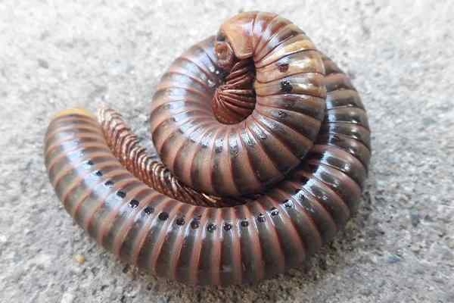Keeping Centipedes And Millipedes Out Of Your Home
There is something unsettling about seeing hundreds of millipedes clinging to the walls of your entryway. It is even more disturbing when they find a way inside your home and are clinging to the walls and ceiling of your living room, kitchen, bedroom, or bathroom. But all it takes is one centipede to disgust some people out. Are you one of them? While centipedes are not dangerous pests, they definitely give off that sort of vibe. Perhaps it's their alien appearance. Maybe it is the thought of all those legs touching your skin--as a centipede crawls over you while you sleep. Who knows for sure. All we know is there are few people who want to have either of these pests inside their home. Here are a few facts about centipedes and millipedes that may help you deal with them.
Centipedes
In your garden, these arthropods can be beneficial because they eat insects that can damage your plants. Inside your home, they dine on cockroaches, spiders, silverfish, and bed bugs, which is actually pretty helpful. But, centipedes make horrible pest control technicians. Not only do they lack the professionalism of a human pest control technician, leaving the job partially done, they are considerably less attractive. Since these bugs can find food in your home, don't expect a centipede infestation to resolve itself.
Millipedes
In nature, these bugs have an important role. They help to break down decaying leaves, wood, and plant material, which fertilizes the soil. Around your foundation perimeter, these arthropods will hide under dead leaves, mulch, piles of grass clippings, and in damp places such as flower beds, gardens, and ornamental landscaping. When they get into a home, they won't live long if they don't have a moist location. So don't be surprised if you find hundreds of millipedes curled up dead on the floor.
Are Centipedes And Millipedes Dangerous?
House centipedes and millipedes are generally not dangerous to humans, but they can be a nuisance for homeowners.
House centipedes are predators, feeding on other insects like spiders, ants, and cockroaches. While their venom can immobilize their prey, it is usually harmless to humans. If provoked or mishandled, they may deliver a mild, painful bite that can cause minor irritation. However, this is considerably unlikely unless you go out of your way to bother one, such as by picking one up and handling it.
Millipedes, on the other hand, are harmless to humans as they do not bite or sting. They primarily feed on decaying plant matter and help to break down organic material in the environment, which makes them a benefit to the ecosystem. However, some millipede species produce a defensive fluid that might cause mild skin irritation or discoloration if it comes into contact with the skin.
Both house centipedes and millipedes can be considered nuisances for homeowners. House centipedes can be alarming to people due to their alarming appearance and quick movements, while millipedes tend to become a problem around homes with moisture problems or damp conditions that allow them to thrive.
Entry Points
Both of these pests will take advantage of similar entry points. They both prefer to be in damp locations and around damp wood. If you're finding them in your home, it is likely that you have a moisture-damage issue to resolve. This may be a location of your home where water is running down the side of your exterior walls, instead of being channeled away by your gutter system. You may have leaky plumbing or hoses. There might be an area near your home that gets excessive shade, and moisture from rain is able to keep that area damp. Wherever you have water doing damage to the wood of your home, you can expect to find these two bugs.
When door frames become rotted at the corners, bugs of all types can squeeze in. If you're finding dried-up earthworms or millipedes on a basement floor, there is a good chance there is an entry point nearby. The basement door is a good place to check first. If you see a hole, seal it by using a caulking gun and high-quality silicone caulk.
When window frames begin to rot, especially basement windows, centipedes and millipedes will take advantage of it. And other bugs will help them. Carpenter ants are notorious for creating holes that centipedes and millipedes use to get in. Don't be surprised to find carpenter ants inside your home if you're seeing centipedes or millipedes.
How To Keep Centipedes And Millipedes Out
The first step in dealing with moisture pests is to add fans or dehumidifiers in humid locations of your home, such as the basement. This will make the environment less habitable.
Do an inspection of your exterior walls and foundation, sealing any hole, gap, or crack you find. Pay close attention around doors, windows, plumbing, wire conduit, and air conditioning units.
Keep organic debris raked up and away from your foundation walls. Trim tree branches to allow the sunlight to dry your foundation perimeter. And address any conditions that allow moisture to build up.
You come across damaged wood, get these spots repaired or, at the very least, seal them so pests can't use them as an entry point.
Use screens to cover over any vents or other openings you find. Both of these bugs can get to most locations on a home.
Ongoing, Year-Round Protection
Pests aren't just a nuisance. They can cause harm and spread pathogens to everyone living in your home, damage your property, and (as is the case with these two) they can be a warning sign of water damage. No home should be without an effective pest control plan. It is essential protection every home should have. If you live in Houston, Katy, Cypress, or the surrounding area, get your protection in place by going here.

